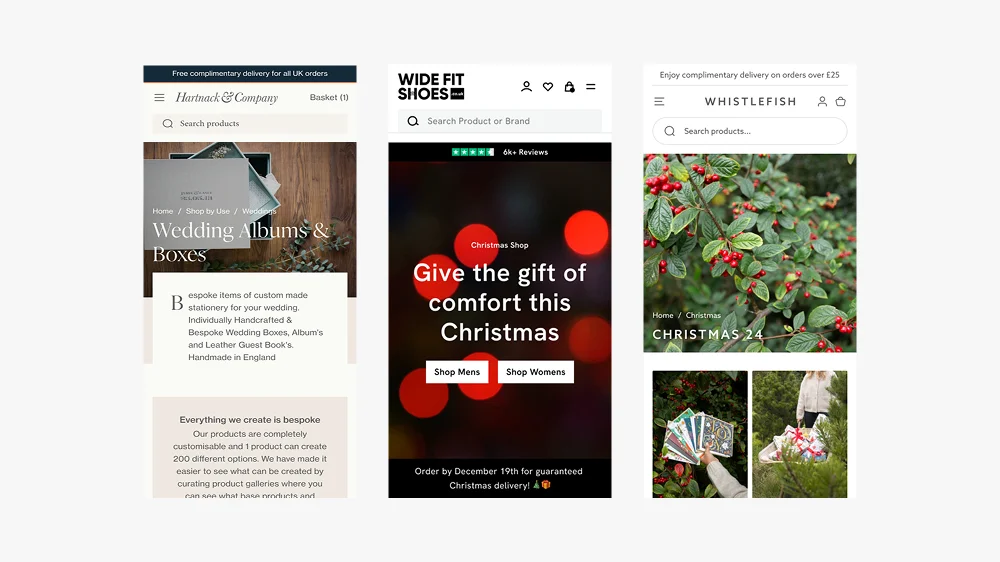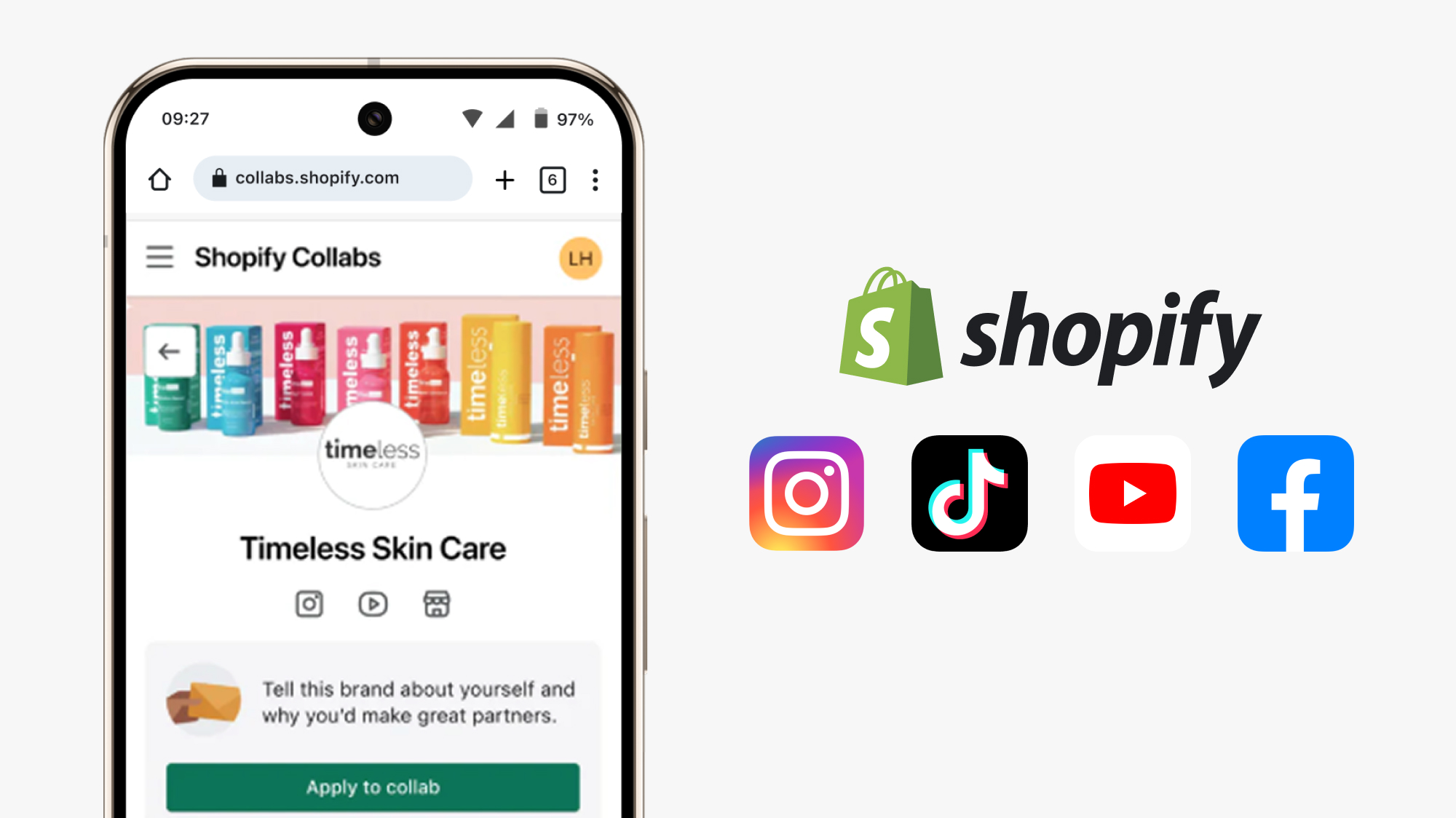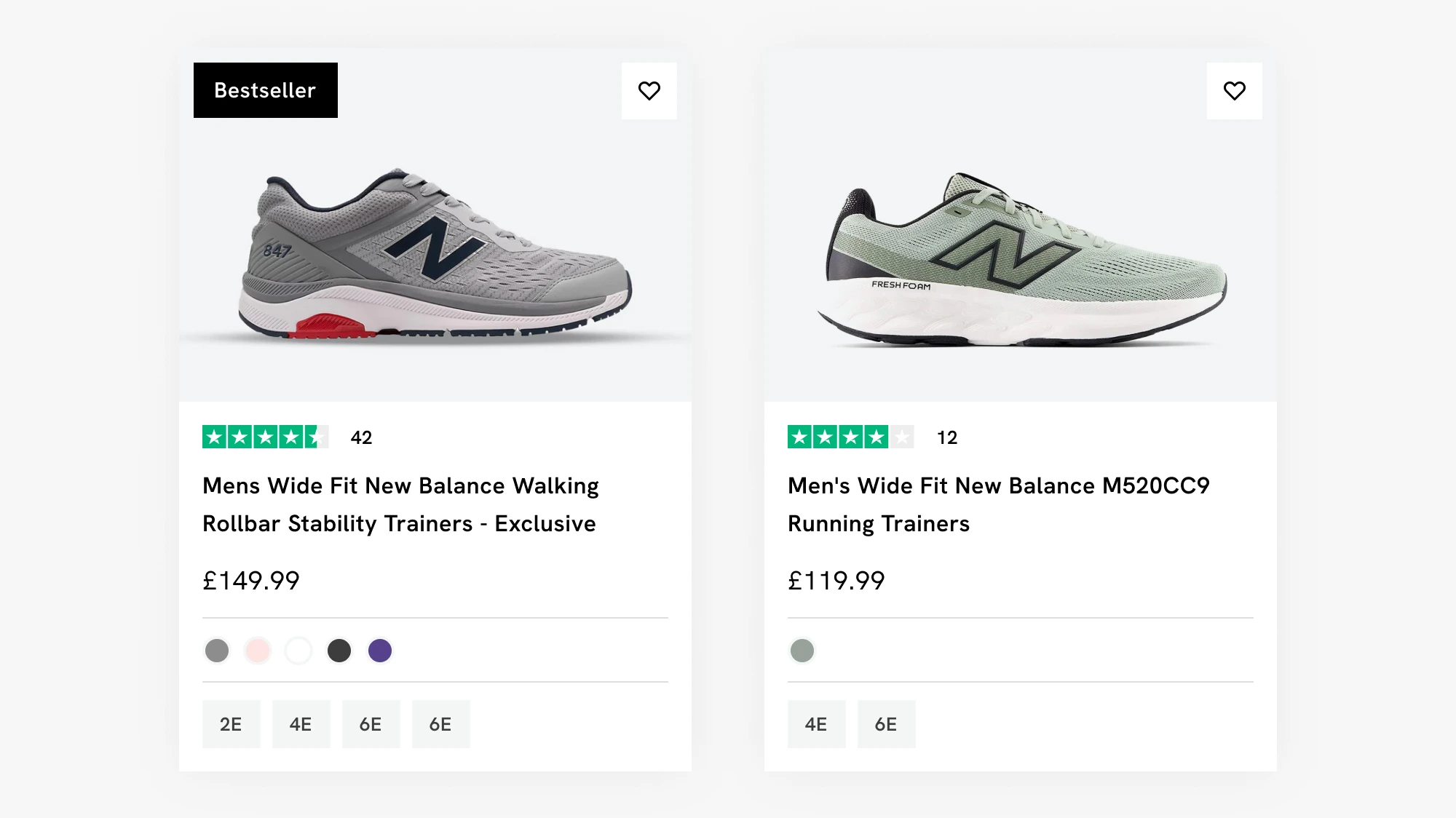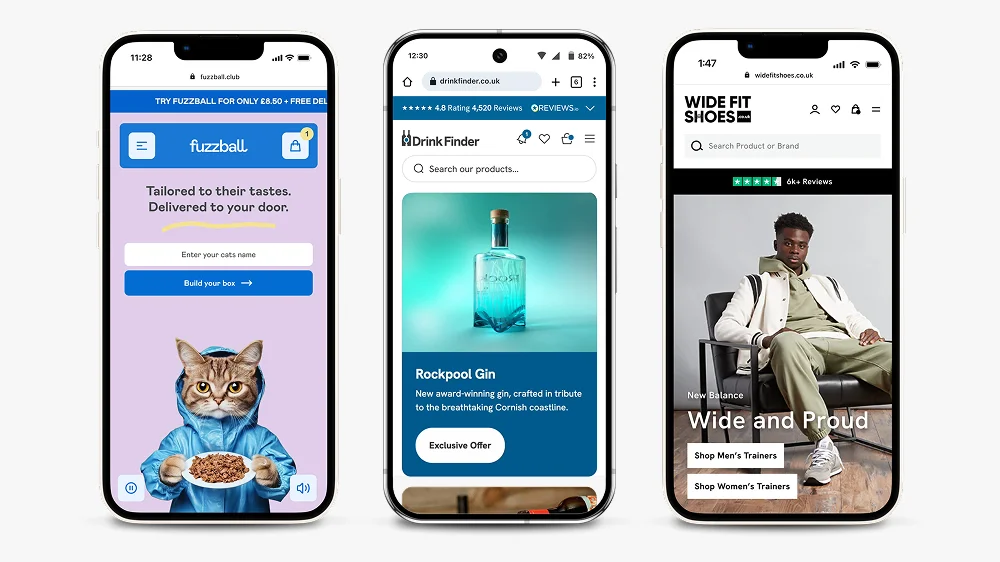Introduction
I’ve designed Shopify landing pages for brands like Whistlefish, Willow & Stone, and Wide Fit Shoes, and I’ve seen first-hand what separates a page that converts from one that underperforms.
This guide will break down the core elements of a high-performing landing page, show how scalable design systems make Shopify sites more flexible, and share practical examples you can apply to your own store. You can always view more of my Shopify website design services.
Why Landing Pages Matter in Ecommerce
Unlike a homepage, which is largely a navigation tool with trust converters, a landing page has a single focus: convert visitors. This could mean signing up for a newsletter, claiming a discount, or buying a featured product.
Landing pages aren’t just important for conversions, they’re also a powerful tool for SEO. A well-optimised landing page can rank for specific keywords, attract targeted traffic, and provide a clear entry point for new visitors. When structured properly, landing pages act as signposts that guide customers deeper into your site, helping them drill down into categories, collections, or products in a logical way.
They’re also perfect for seasonal campaigns. For example, a retailer might create a Christmas landing page, a summer sale page, or a Mother’s Day promotion. Each can be optimised for search, linked from paid ads, and slotted neatly into your navigation without disrupting your core site structure.
For Shopify store owners, this means landing pages are one of the smartest investments you can make, they boost conversions, support your SEO, and make your site more adaptable to customer journeys.
The Key Ingredients of a Good Landing Page
1. A Clear, Compelling Headline
Your headline needs to immediately explain the value proposition. For Wide Fit Shoes, the headline highlighted comfort and fit — instantly addressing customer pain points.
Top Tip: Keep headlines short and impactful. Test variations to see which resonates most.
2. Strong Visual Hierarchy
For the bespoke store design of the new Whistlefish website, bold typography, product imagery, and whitespace kept the focus on the art prints rather than clutter.
I designed a modular Shopify design system that ensured each block works in harmony. This means sections can be rearranged without breaking the flow, ideal for seasonal campaigns or A/B testing.
3. Trust Signals
People buy from brands they trust. For Willow & Stone landing page, customer reviews and editorial mentions gave immediate credibility. Adding trust badges (secure checkout, delivery info, etc.) further reduced hesitation.
Read more about Trust Signals and how they help eccomerce stores and boost conversion rates.
4. Mobile-First Design
With more than 70% of ecommerce traffic now mobile (Statista), responsive design is non-negotiable. On Shopify 2.0, flexible sections ensure CTAs, headlines, and product images render correctly across devices.
See my guide on Conversion Rate Optimisation to learn why mobile-first design is essential.
5. A Single Call-to-Action (CTA)
The best landing pages avoid distraction. One clear CTA, repeated in the right places, ensures the user journey stays focused. For Wide Fit Shoes, the CTA was consistent: “Shop the Collection.”
Placement tips:
- The first CTA should appear “above the fold.”
- Repeat it after major sections like testimonials or product grids.
- Avoid giving visitors more than one competing choice.
6. Fast Loading Speed
Slow pages kill conversions. Optimised imagery, efficient video hosting, and Shopify’s built-in performance tools keep landing pages lightweight.
7. Scalable Design Systems
Instead of building one-off pages, I create modular systems. Each section (hero banner, testimonials, product grid, CTA) can be reused, reordered, or replaced without breaking the brand aesthetic.
This gives clients complete flexibility so they can launch new campaigns in minutes without calling in a developer.
8. Colour Psychology & Emotional Triggers
The colours you choose have a huge impact on conversions. Blue signals trust, red creates urgency, and green reassures users. For Willow & Stone, muted heritage tones reinforced their credibility and connection to history.
Top Tip: Test CTA button colours. Sometimes a small contrast (like a warm tone against a cool background) can improve click-through rates by double digits.
More in my article on how to raise conversion rates.
9. Common Mistakes to Avoid
Some of the most common pitfalls I see on Shopify landing pages:
-
Too many CTAs make the experience confusing and lower conversions.
-
Cluttered layouts that overwhelm the user.
-
Unclear value proposition, visitors don’t know why they should care.
-
Ignoring mobile, broken layouts and lost sales.
A professional Shopify web designer can help avoid these traps.
Examples in Action
-
Whistlefish: Seasonal landing pages that showcased collections with strong headlines and visually dominant artwork See Case Study
-
Willow & Stone: A heritage feel reinforced with editorial reviews, subtle typography, and trust signals. See Case Study
-
Wide Fit Shoes: Clear CTAs and product-focused design that catered to customer needs around comfort and sizing. See Case Study
FAQs: What Makes a Good Landing Page?
There’s no fixed length — it depends on your product and audience. Some perform best with just a headline, image, and CTA. Others need testimonials, detailed benefits, and FAQs. The key is clarity.
No. Your homepage is a broad entry point, while a landing page is campaign-specific. Think of it as a focused tool to convert targeted traffic.
Start with small tweaks: refine headlines, test CTA colours, add trust signals, and ensure your mobile experience is flawless. For bigger gains, work with a Shopify expert UK who understands conversion rate optimisation.
Yes. You can duplicate templates and run tests using Shopify apps or external testing tools. This is one of the best ways to find out what truly resonates with your audience.
Final Thoughts
A good landing page isn’t just about aesthetics; it’s about clarity, focus, trust, and scalability. By combining strong headlines, trust signals, mobile-first design, and modular systems, you give your Shopify landing pages the best chance to convert.
If you’re ready to improve your landing pages, I’d love to help. Work with an experienced Shopify designer to save time, improve results, and grow your store.

This article was written by Anthony Bliss, a freelance Shopify Expert and UX and UI Designer that helps brands scale up on Shopify.
Partner with a Shopify expert to elevate your store
More Shopify Articles
Shopify Collabs in 2025: The Complete Guide to Creator Marketing
Over the last few years, influencer marketing has evolved from a niche tactic into a mainstream growth channel.
Product Comparisons for Shopify Stores: How Better UX Boosts Conversions
When a customer lands on your Shopify store, they’re either ready to buy or still weighing up their options. For that second group, the browsers and…
How to Choose the Best Shopify Website Designer in the UK (2025)
Looking for the best Shopify website designer in the UK (2025)? Hiring the right designer ensures your store isn’t just visually appealing but also…
Shopify Expert
Ready to elevate your store? Start your Shopify transformation today
Shopify expert who can help elevate your store to the next level
20 years of agency and direct client experience, without the high price tag
Network of the best developers, Klaviyo experts & SEO experts perfect for big projects
This site is protected by reCAPTCHA and the Google Privacy Policy and Terms of Service apply.



